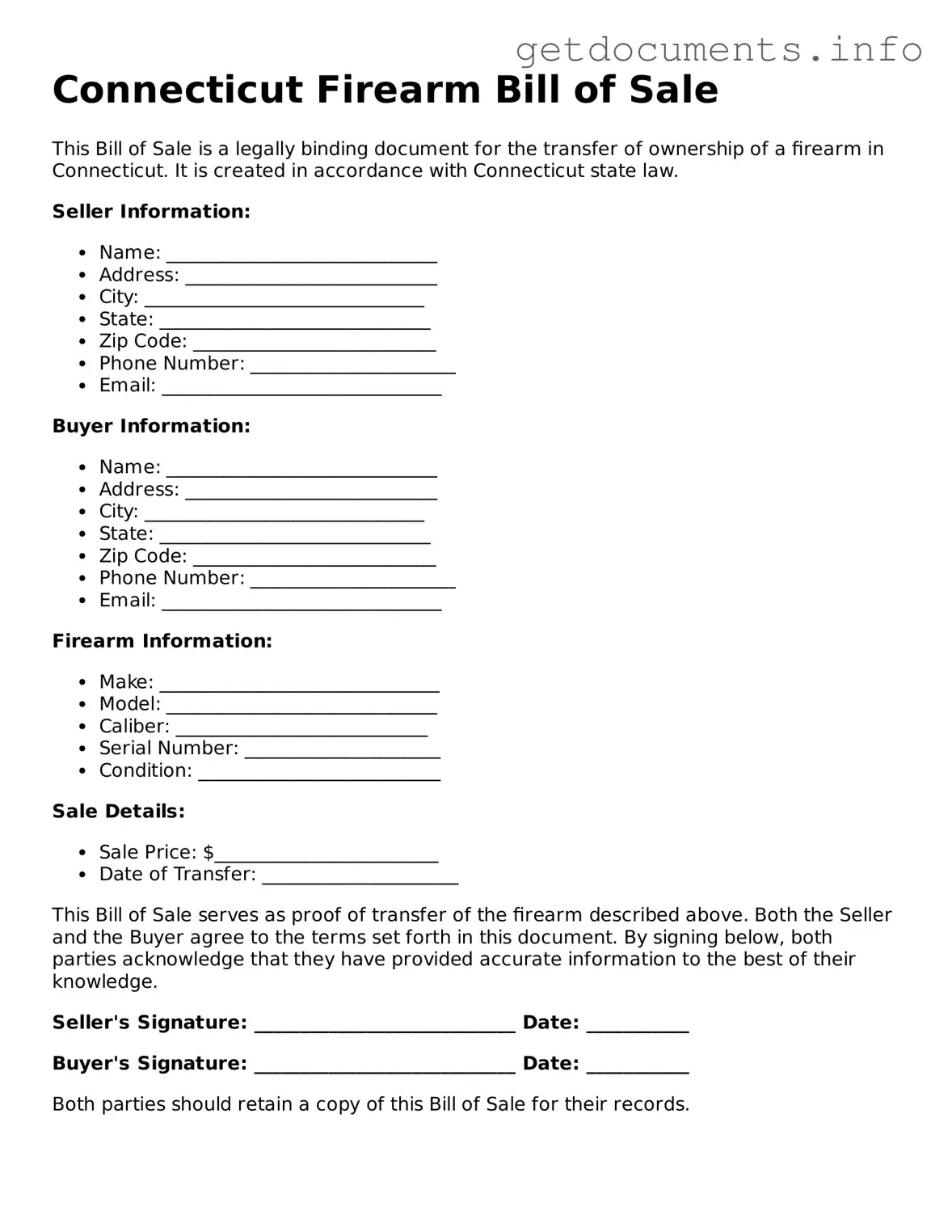Free Firearm Bill of Sale Template for Connecticut
The Connecticut Firearm Bill of Sale form is a legal document that records the sale and transfer of firearms between individuals in Connecticut. This form helps protect both the buyer and seller by providing a clear record of the transaction. To ensure compliance with state laws, it’s essential to fill out this form accurately.
Ready to complete your firearm sale? Click the button below to fill out the form.
Access Firearm Bill of Sale Editor
